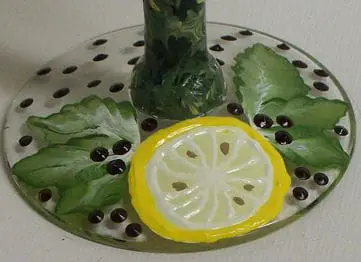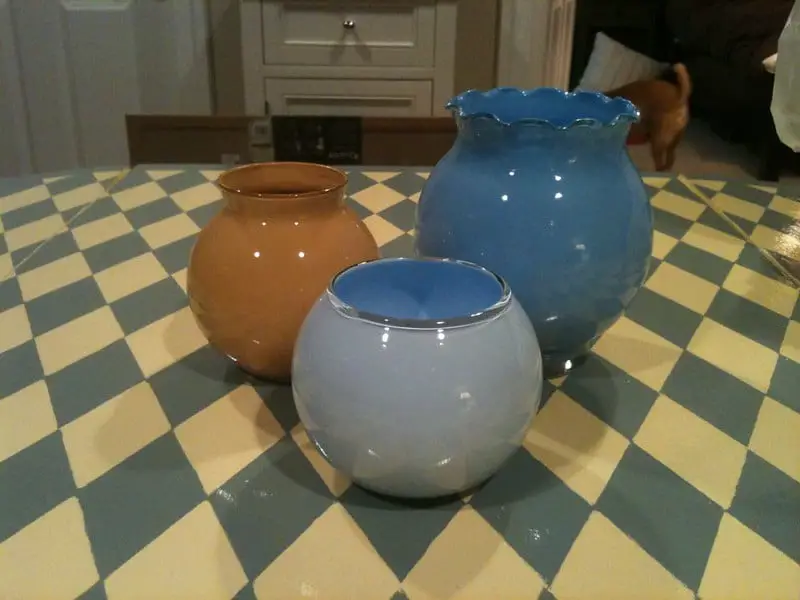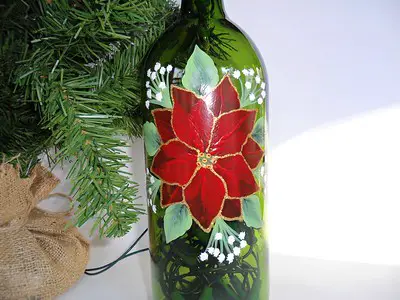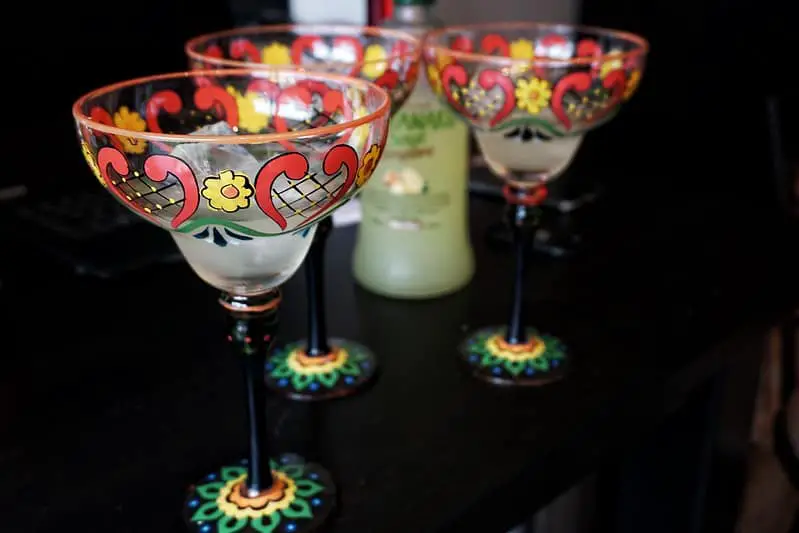While most of us think of acrylic paint as a relatively modern medium, nothing could be further from the truth. In fact, the ancient Romans actually painted with acrylic, and some historians report that ancient Egyptians were using this kind of paint in their artwork, too.
One of the most versatile, flexible, and adaptable paint mediums there are, plenty of people want to know if they can use acrylic paint on glass. We can tell you for sure that you can certainly use acrylic paint on glass material – it’s just that you have to be a little bit careful about the paint you choose, glass you choose, and that you keep a couple of other important things in mind as well.
One of my favorite acrylic paint sets is this Arteza box set, because they have a wide variety of colors and styles. We have put together this detailed guide to help you get started with your acrylic paint glass- so let’s jump right in!

Choosing the Right Type of Acrylic Paint
While you definitely can paint glass with acrylic paint, you need to be sure that the paint you choose itself is good to go so it lasts on the surface.
A variety of different acrylic options are available (and almost unlimited amount of choices, really) but not all of them are going to work with glass. You really have to be sure that the type of paint you are using is dialed in.
For starters, you’ll need to consider the transparency of the acrylic paint that you are choosing. Full coverage paint may work well on glass, but a lot of people like to maintain (at least a little) transparency when they are painting on a material like glass.
Make sure that the transparency level of the acrylic you choose fits how you envision this product being finished. Also, you need to be sure that the color you have selected is as true to your vision as you can get.

Glass has a way of distorting color, sharpening, dulling, or transforming its look depending on the color properties of the glass itself. If you’re dealing with 100% pure glass, you’re still likely going to have to worry about sunlight distortion that impacts the way your acrylic paints look going forward.
Choosing the Right Type of Glass to Work With
The second thing you have to factor in is the type of glass that you are going to be painting on.
After acrylic paint is applied to glass it has to be “baked on” – something that we collaborate on in just a moment – and you need to be sure that the type of glass you have picked is strong enough to hold up to these temperatures. Check out my other article on baking acrylic paint onto glass, for all your glass baking questions!
Glass that is particularly thin usually has Coefficient of Expansion (COE) properties that allow for a little more expansion than thicker glass options. Make sure that the glass you are going to be painting on has a high COE that can stand the kind of temperatures you need to bake your acrylic paint onto your glass surfaces.
Applying Enamel on Glass
Before you get to the baking stage of finishing your acrylic painted glass project, you need to apply enamel over the work to sort of “lock-in” the finished results. I recommend this FolkArt enamel. It not only works on glass, but it’s great for ceramics too!
These enamel materials are very easy to work with, finish completely clear, and generally protect not only the acrylic painted artwork that you have created on glass, but also add an extra layer of protection to the glass itself.

Apply enamel to the entirety of the painted work only after it has dried 100%, and then give the enamel plenty of time to dry and set up as well.
Don’t Forget to Bake!
The next piece of the puzzle that you’ll want to remember is to actually bake your acrylic painted glass project to set everything in place. Check out one of my articles that talks all bout baking acrylic paint in the oven.
Not only does this bond your acrylic paint directly to the glass itself but it also helps to set and bond the enamel that you have applied to the paint and to the glass layer underneath, too.

Most painted glass projects can be baked at temperatures of 350° for 30 minutes – no longer – to really lock things in. Just give your painted project about 45 minutes in an unopened oven afterwards to cool down and to finish the drying process.
Keep these tips and tricks in mind and you’ll be good to go painting acrylic projects on glass!
Don’t forget to check out my recommend products page for all your acrylic needs. Happy painting!

